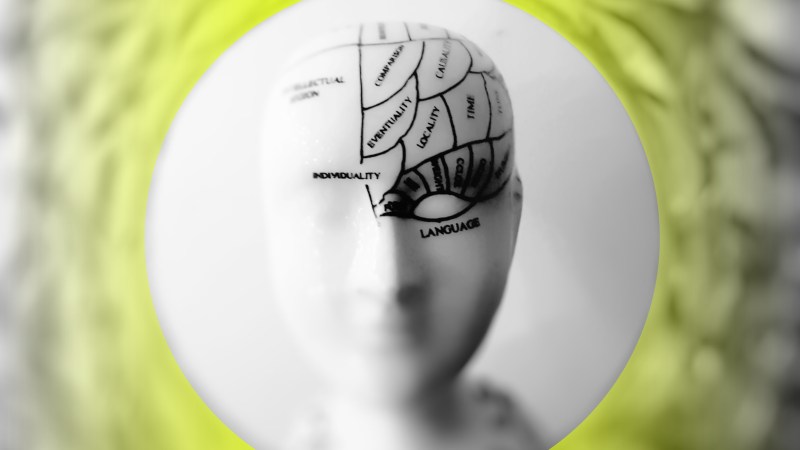At the University of Oxford, [Jen Chesters] conducts therapy sessions with thirty men in a randomized clinical trial to test the effects of tDCS on subjects who stutter. Men are approximately four times as likely to stutter and the sex variability of the phenomenon is not being tested. In the randomized sessions, the men and [Jen] are unaware if any current is being applied, or a decoy buzzer is used.
Transcranial Direct Current, tDCS, applies a small current to the brain with the intent of exciting or biasing the region below the electrode. A credit-card sized card is used to apply the current. Typically, tDCS ranges from nine to eighteen volts at two milliamps or less. The power passing through a person’s brain is roughly on par with the kind of laser pointer you should not point straight into your eyeball and is considered “safe,” with quotation marks.
A week after the therapy, conversational fluency and the ability to recite written passages shows improvement over the placebo group which does not show improvement. Six weeks after the therapy, there is still measurable improvement in the ability to read written passages, but sadly, conversational gains are lost.
Many people are on the fence about tDCS and we urge our citizen scientists to exercise all the caution you would expect when sending current through the brain. Or, just don’t do that.















That’s interesting to not that the effect is temporary like the improvements made by ELectroconvulsive therapy (ECT) while this doesn’t appear to induce seizures like ECT. I wonder if the gains made by ECT are caused by the same effect and the induction of a seizure in a patient is only an indicator of the depth of electrical penetration in the brain.
I’ve often thought that myself, maybe ECT is just too f**king much of a good thing as it were.
Dr. Hathaway would approve…
https://www.youtube.com/watch?v=MmaTxljCoKk
This feels like bashing an old TV, hoping that it would work again. This randomly applying voltage to a vague portion of a circuit is just guessing. The fact that the effect on the patient is hard to measure and the difficult repeatability doesn’t help either.
If you have a circuit you don’t understand, after you get a component layout (and we don’t even know what all the components of the brain DO, let alone how they’re interconnected) you’re going to have to start probing around. Sure, sometimes you’ll make mistakes, but those mistakes typically lead to new discoveries. Phineaus Gage showed us that even with a part of your processor missing, you can still run your entire system – with “minimal” disruption. Blow a chunk out of an 8086 and let’s see it still boot.
I agree, but this is not probing a single trace or connection, but just applying low voltage to a complete portion of a print. Until we can pinpoint the power to a specific neuron it will be like bashing on an old tv.
As someone who has dealt with epilepsy resulting from a traumatic brain injury for more nearly 30 years, I am strongly opposed to anything that looks like doctors poking someone in the brain and saying, “Gee, I wonder what this does.” ECT in any form is nothing more than an attempt to provide some kind of therapy by randomly zapping the most sensitive organ in the body, and the one organ where even the slightest damage can cause life-long issues of every horrible kind imaginable. If anyone ever tries getting near me with any kind of ECT device, they are going to find themselves with an imprint of the bottom of my walking cane on their forehead.
That is exactly why ECT is used as an “end of the line” treatment for clinical depressions and suchlike, and not as a “lets see what this does”.
If you have to choose between soul crushing chronic depression and having ECT with even minimal chance of succes, well.. I’d know.
If I could fix my stutter with the occasional application of 9-18 V @ 2mA, I would absolutely do so.
This is the second time I’ve heard of the potential to use electrical currents, I just worry about the ramifications of this over time and the potential habituation of the effects (requiring stronger currents over time). Maybe this study will lead us to learn more, but I’m weary about it’s real-life applications.